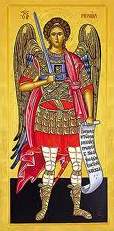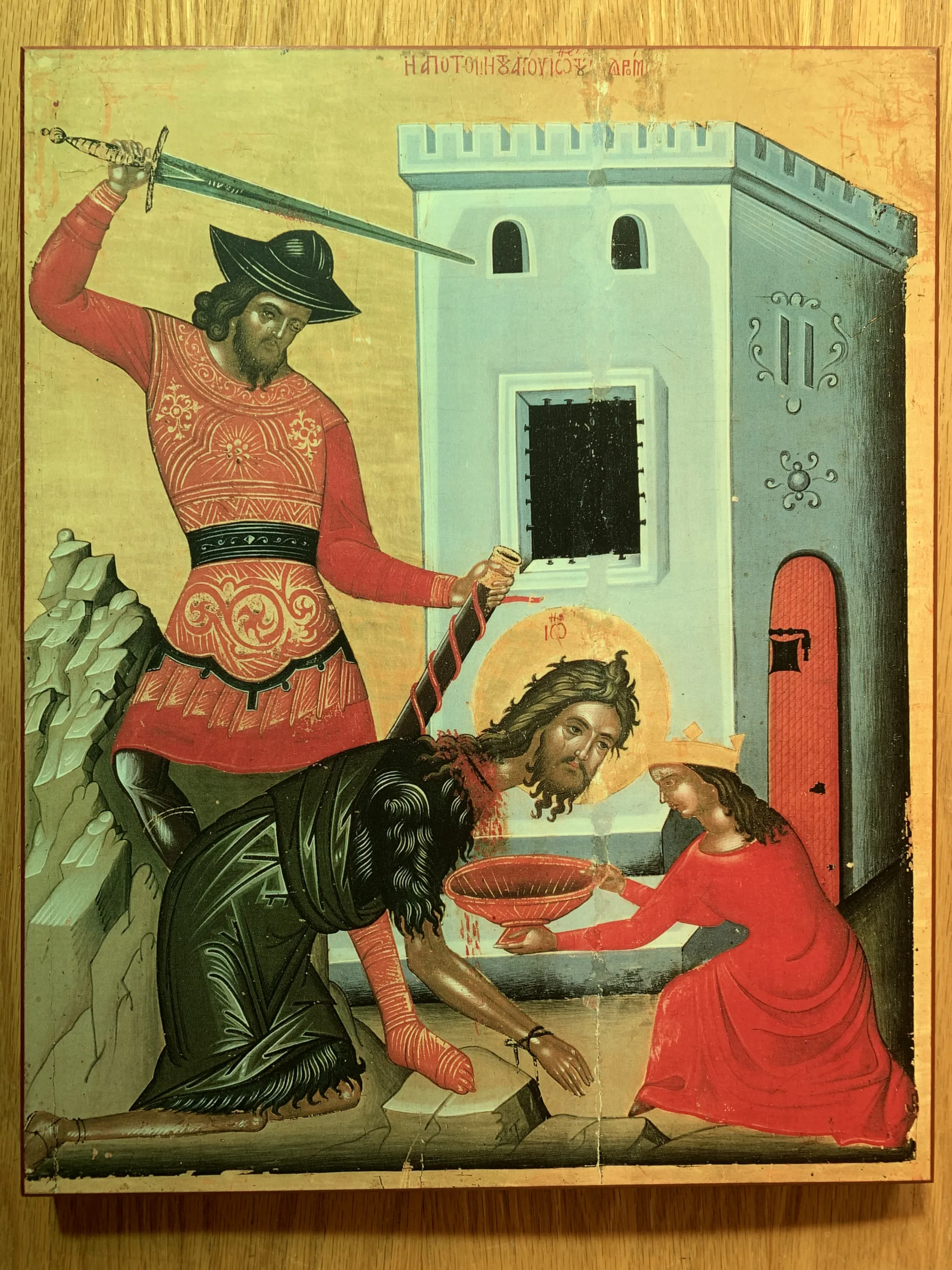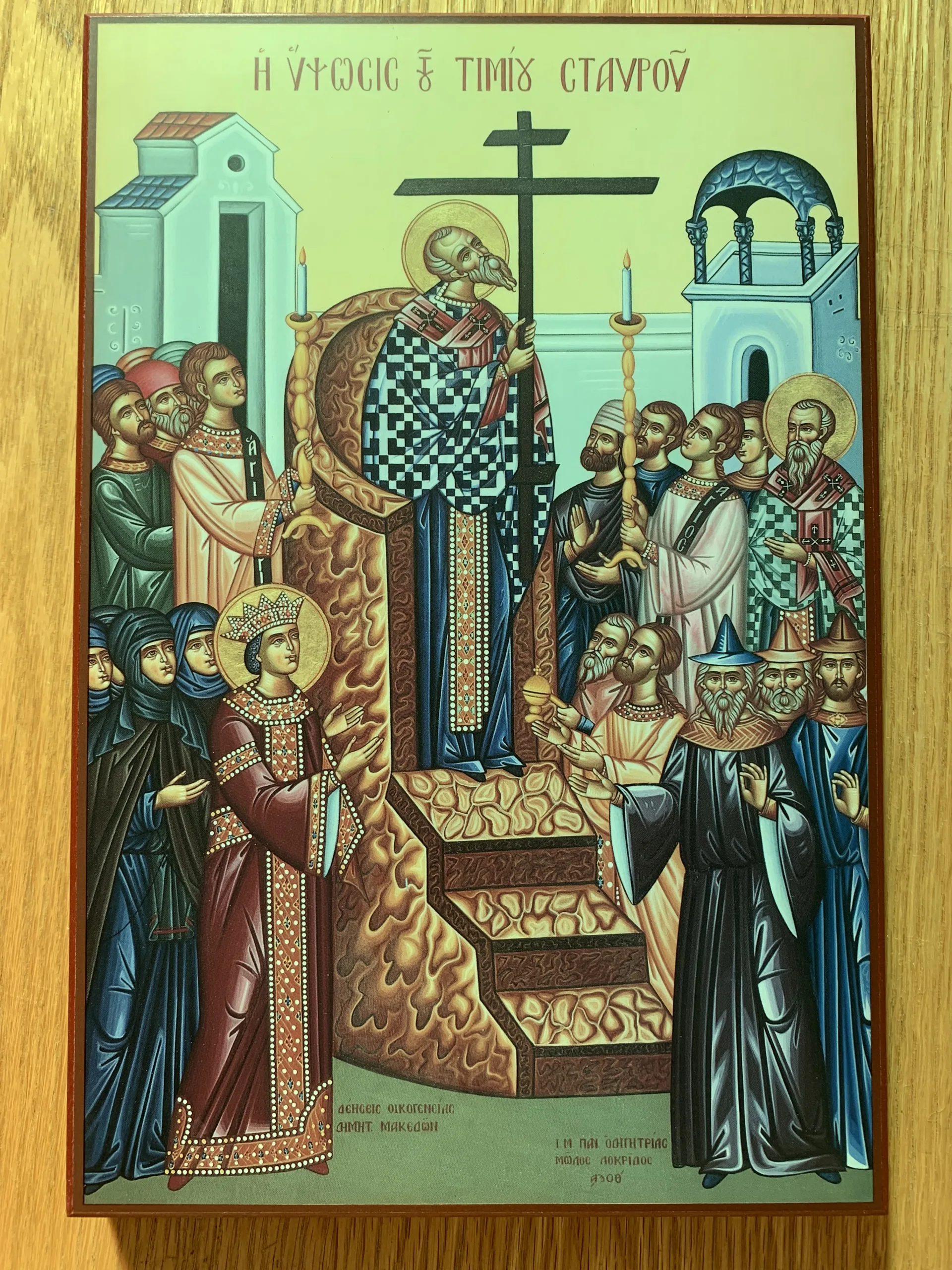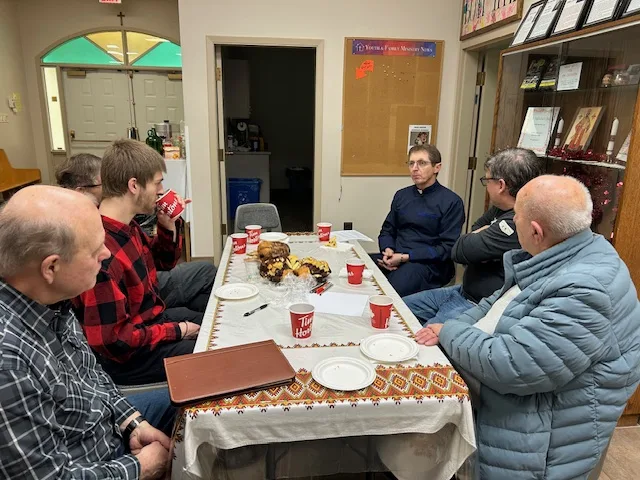Things You Wanted To Know
Icon Corners
The altar is to a church what an icon corner is to a home. The home is our domestic church. The mother and father are the head of the church, with the children as their congregation. The parents have an important role to play in leading their church. Their responsibility is to bring themselves and their children closer to God. They are able to accomplish this by learning more about Him and living life as He would choose. It is also their job to bless their children. They are to encourage their children to pray, fast, read about God and the history of His people. They are the first catechists to their children.
The children also have important roles in the domestic church. They should learn all the lessons that their parents teach them. They can read the scripture passages, light the candle, and prepare and participate in the family prayer time.
The domestic church is the basic building block of the larger church. It is the desire of the church to strengthen the domestic church because this is its foundation.
What is an icon corner? The icon corner is a reminder of who we are and serves to provide us with a place to pray. We are children of God. Just as we have photo albums full of family members, we should also have pictures of God and the Saints to remind us who we are and who we are to become. The icon corner also provides a place where family can come together to pray. The family that prays together, stays together.
Each icon corner will be set up to reflect the family and their needs. An icon corner can be made up of a single icon or it could include any number of other items such as:
Icons: Every icon corner will be different in the kinds and number of icons present. It would be appropriate to have an icon of Jesus Christ or of the Mother of God, or both. Patron saints of each member of the family may be added. Icons of special feast days or any other icon that has significance to the family may be added. We do not pray to or honour the icon itself. We look through the icon, like looking through a window. We pray to the person that is represented. Icons are not lifelike. They do not show the present reality of humanity, rather they depict the reality of the person having been changed by sharing in God’s divine nature.
Shelf: The shelf has a practical purpose. It is where we place the items. It is the altar of our domestic church. (stand, desk, table)
Cross: The cross is the symbol of the resurrection. It is the sign of the victory over sin and death.
Bible: This is the word of God. It should be left open on the shelf or table to let the Word of God pour out. It is important not lust to leave the Bible in the corner. We should take it and read it. This is our opportunity to get to know God better.
Candle or lamp: The candle shows us that God is the light of the world. The candle can be lit all the time or just during the time of prayer. It is interesting to watch how the flame of the candle plays with the lighting on the icons.
Holy Water: This is the water that is blessed at the Feast of Jordan. The water can be drunk or sprinkled during time of illness or whenever blessings are needed.
Holy Oil: The holy oil may also be used for an anointing during the time of illness or when blessings are needed.
Rushnyk: There is usually a rudhnyk (embroidered cloth) draped over the icon or cross. This is to show the honour and respect that we place on the icon. This could be the rushnyk that was used for the parent’s wedding. The rushnyk should be taken off during lent.
Parents’ wedding crowns: The crowns are a symbol of the consecration of the parents at their wedding. This is only possible when the crowns are woven from myrtle as part of the wedding preparations. If there are no wedding crowns, include some other symbol of the wedding like a picture or certificate.
Prayer book: There could be a prayer book that the family uses during their prayer times.
Incense: Just as we use incense in our church, we could also have incense present in the domestic church. We ask that our prayers rise like incense to God.
Prayer beads: A set of chotky (Jesus prayer beads) or a rosary.
Where do we put the icon corner? Traditionally the icon corner is placed in a corner, hence the name. Some also like to have it on the east wall, for the same reason our churches usually faced East, anticipating the second coming of Christ. The best room for the icon corner will depend on the family. You may want it in the kitchen, where the family gathers to eat may be in the living room or family room, where the family enjoys each other’s company. The icon corner should be part of a family area.
How do we pray with an icon corner? As with any new form of prayer, we need guidance to get started. To begin, simply gather at the icon corner to say the usual morning and evening prayers. As you become more accustomed to praying in this location, the prayers develop into something that will uniquely suit the family. Scripture readings, petitions, thanksgiving, hymns, traditional and spontaneous prayers could all be included. A beautiful way to start the new year is to have a house devoted to Christ. Having just established an icon corner in the home, invite the parish priest to bless not only your home, but also to bless the family icon corner. He may slao have some additional prayer suggestions.
Resource list:
There are a number of books that are available on icon corners and praying with icons:
* Jim Forest, Praying with Icons, Orbis Books, Maryknoll, New York, 1997
* Myroslaw Tataryn, How to Pray with Icons – An Introduction, Novalis, St. Paul University, Ottawa, 1998
Our Eparchial Catechetical Centre also has information on icon corners.
A project of the Ukrainian Catholic Women’s League of Canada, National Executive.
January 30, The Three Holy Hierarchs
Each of these saints have their own feast day. St. Basil the Great, January 1; St. Gregory the Theologian, January 25; and St. John Chrysostom, January 27. This combined feast day, January 30, was instituted in the eleventh century during the reign of Emperor Alexius Comnenus. At one time a debate arose among the people concerning who of the three is the greatest? Some extolled Basil because of his purity and courage; others extolled Gregory for his unequaled depth and lofty mind in theology; still others extolled Chrysostom because of his eloquence and clarity in expounding the Faith. Thus some were called Basilians, others Gregorgians, and the third were called Johannites. This debate was settled by Divine Providence to the benefit of the Church and to an even greater glory of the three saints. Bishop John of Euchaita (June 14) had a vision in a dream: At first, all three of these saints appeared to him separately in great glory and indescribable beauty, and after that all three appeared together. They said to him, “As you see, we are one in God and there is nothing contradictory in us; neither is there a first or a second among us.” The saints also advised Bishop John that he write a common service for them and to order a common feast day of celebration. Following this wonderful vision, the debate was settled in this manner: January 30 would be designated as the common feast of these three hierarchs. The Greeks consider this feast not only an ecclesiastical feast but their greatest national school holiday.
Living, Suffering and Dying. . . what for?
“The enigma of pain and death, which outside the Gospel crushes us, is illuminated through Christ and in Christ.” – Pope John Paul II
Archangel Michael Protects God’s People
In many Ukrainian Catholic Churches there is an icon of an angel holding a sword. That is Archangel Michael, the chief commander of God’s army of loyal angels, who won the battle against the rebellious angels led by Satan.
The feast day of Archangel Michael and the rest of the “bodiless powers of Heaven,” falls on Nov. 8/21. God created the visible earthly world and also the unseen one, which is the realm of Archangel Michael (often referred to as “St. Michael”), his fellow archangels and the other ranks of angels, such as the seraphim and the cherubim. In the Old and New Testaments, Archangel Michael’s main roles include: fighting Satan; bringing souls to judgement; rescuing good souls from evil, especially at the hour of death; and protecting God’s people.
Early Christians regarded him as a healer, believing he generated a medicinal spring near Colossae in modern-day Turkey, and he is said to have miraculously saved a monastery from ruin. In the Middle Ages, he was venerated as the patron of knights and chivalric orders and in many Western countries his feast, Michaelmas Day, was strictly observed.
Archangel Michael is also the patron saint of police officers, soldiers, Germany, Brussels and Kyiv. In Kyiv, St. Michael’s Golden-Domed Monastery, built in the 1100s, sits on the banks of the Dnipro River, reminding Ukrainians of the historic connection between the archangel and their nation.
Why is the fish used as a symbol?
The early Christians used the Fish as a symbol of Christ. The Greek word for fish is “icthus” which was an abbreviation (acronym) for “Jesus Christos Theou Uios Scter” (Jesus Christ, the Son of God, Savior)
What does the word “Amen” mean?
Amen is a Hebrew word which means “So May It Be”. Amen is used to confirm/affirm a promise or truth of God. Typically, it ends most prayers.
What does the word “Catholic” mean
The word Catholic means “universal” (“in keeping with the whole”).
What do the letters IC XC HI KA stand for?
On some icons, the letters IC XC HI KA are Greek letters that are abbreviations for “Jesus Christ Conquers.”
Where does the word “Gospel” come from?
The word “Gospel” originates from the Anglo-Saxon words “god” (i.e. good) and “spell” (i.e. tell). Restated in today’s language, Gospel means “Good News”. If you read Luke 4:16-18, you will notice that Jesus used the words “Good News” as he appeared at the synagogue in Nazareth.
Does the word “Alleluia” have a meaning?
“Alleluia” was used by the Jewish people as a cry of praise and joy to God. It translates as “Praise the Lord!” Prior to the priest reading the Gospel during Liturgy, the congregation sings “Alleluia” to express their joy in soon hearing the Word of God.
What does the symbol CHI RHO mean?
The Chi Rho is one of the earliest forms of christogram, and is used by Christians. It is formed by superimposing the first two letters in the Greek spelling of the word Christ (Greek : “Xpuctos”), chi = ch and rho = r, in such a way to produce the monogram
Although not technically a cross, the Chi Rho evokes the crucifixion of Jesus as well as symbolizing his status as the Christ.
Why does the priest hold up the cloth during the Nicene Creed?
During the Nicene Creed, the priest lifts up the veil and keeps it before his eyes. This reminds the congregants that many “articles of faith” are mysterious and are “dark to our weak mind”. Therefore, we must accept the “articles of faith” based on the infallible word of Christ.
What does the name Jesus mean and how did Jesus get His name
The name Jesus means “the Lord saves”, in Hebrew Yehoshua. According to Jewish custom, Jesus received His name on the eight day from His birth and at the time of His circumcision. The eight day is significant because it welcomes new era after the seven days of creation. The angel of the Lord gave this name to Joseph in a dream: “Joseph, descendant of David, do not be afraid to take Mary to be your wife. For it is by the Holy Spirit that she has conceived. She will give birth to a son and you will name him Jesus – he will save his people from their sins.” (Matthew 1:20-21) The angel Gabriel also said to Mary: “You will become pregnant and give birth to a son, and you will name his Jesus.” (Luke 1:31)
Happy Thanksgiving
Thanksgiving Day comes once each year. (Though not a Liturgical Holy Day, this civic holiday has been embraced by the Church as most worthy of celebrating.) This is a day that families come together to enjoy each other’s company, share a bountiful meal and above all – give thanks. But should this be the only day that we should be thankful on?
Thankfulness is an important step towards attaining a richer and fuller life and we should continue on this path everyday – not just on Thanksgiving Day.
As we approach Thanksgiving Day, let us remember all the blessings that God has given us and for everything that He has done for us, our families and our community. Do not take for granted the blessings that He has bestowed upon us. Thank Him for everything He has done for us – every day, for only through His generosity, are we blessed with His gifts every day. As St. Paul said, “Be careful for nothing: but in everything by prayer and supplication with thanksgiving, let your request be made.” (Philippians 4:6)
The question may arise in our minds as to for how many things we should give thanks to God.
The Apostle Paul said: “Giving thanks to God the Father at all times and for everything in the name of our Lord Jesus Christ.” (Ephesians 5-20)



